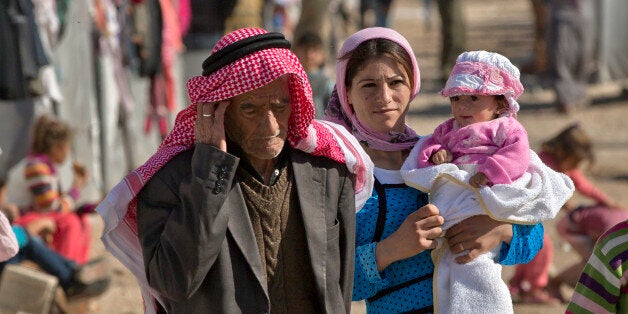
As ISIS advances on villages and towns in northeastern Syria, it not only robs lives but exacts a cultural and historical toll all of us will pay, regardless of religion or national background. We must join together as nations to save humanity and history.
The destruction by the Taliban of the monumental Buddhas at Bamiyan in Afghanistan made clear the Taliban's disregard of ancient world heritage. Similarly, Donald Rumsfeld brushed off looting of the priceless Baghdad Museum after U.S. troops entered the city.
And here we are again -- only this time it is more complicated. Syria, situated at the crossroads of Asia, Europe and Africa, holds the living record of the story through the ages of human progress and civilization. Syria has embedded the roots of the various sects of Christianity, Judaism and Islam. Kobani, site of much crisis today, sits in in close proximity to the second millennium, and later Biblical, site of Carchemish. Deir az Zor is hard by the third millennium mud-brick site of the civilization of Mari close to ISIS-controlled border crossing between Syria and Iraq. Its legacy is a cache of 22000 cuneiform clay tablets providing valuable record of those times. The partially destroyed castle Krak des Chevaliers near Homs recalls the Crusades, the early battles between Christianity and Islam. The 300 BC Seleucid site of Apamea near Homs has been clandestinely excavated by ISIS and other armed groups since 2012.
Abu Bakr al Baghdadi's ISIS has amassed a kitty of over $2 billion, thirty to fifty percent of which comes from the sale of artifacts stolen and vandalized from museums and archeological sites in Syria and Iraq. In Saddam Hussein's hometown Tikrit they have destroyed the Green Church one of the oldest in Christendom.
Their extreme Islamic creed, which does not allow pictorial depiction of the human form, provided ISIS the pretext for the systematic looting, trafficking and profiteering from wide range of cultural goods that represent the indelible heritage of mankind. Unlike the Taliban in Afghanistan ISIS it has honed it to a fine art in Iraq and Syria. To the Taliban the Islamic interdiction was paramount not as the revenue though they turned it a blind eye. Not much information is available on similar denuding of archeological sites in Libya like the remarkable Roman city of Leptis Magna.
As part of its Syria strategy the US must include the preservation our common heritage for future generations. The initiation of a UN Security Council Resolution is imperative to outlaw the possession, transport and trade of 'blood' antiques coming out of those regions presently in the grip of inter-religious and sectarian conflict: Iraq, Syria, Afghanistan, Yemen, Libya and Mali.
The successful Kimberley Process for 'blood diamonds' coming out of Africa provides the model, though an even more stringent and enforceable international agreement is needed. The effort of the International Council of Museums (ICOM) to bring out a red list of Syrian Cultural Objects at Risk is too meagre.
Consider the importance, size and scale. The loss of these cultural goods going back to the third millennium BC epitomizes the human condition through the ages from Neolithic to Assyrian, neo-Assyrian to Greek then Roman, Biblical and Islamic. It is humankind's universal heritage and its disappearance will leave no visible markers for future generations.
The size and variety of these cultural goods is vast and fully susceptible to monetization. It includes samples of writing, figural sculpture, vessels, architectural elements, accessories and instruments, stamps and cylindrical seals and tesserae and coins. The medium used in their creation is equally varied including clay and glazed ceramics, metals, ivory and glass, shell and lime-stone, bone, wood and a variety of stone like gypsum, basalt and alabaster. All of it is threatened by the nether-world of the international trade in antiquities. Satellite coverage for only 30 of 20,000 heritage sites in Syria reveals a systematic pattern of destruction and looting of all the sites.
The looting and trade goes on at a furious pace while the international community remains unengaged and apathetic. We must realize the urgent need for collective action and give the forces fighting the ISIS a mandate to deal with this wanton destruction.
The UN Climate Summit called for massive international effort to preserve the environment for our future generations from the depredations of climate change. A similar call to action to protect and preserve humanity's indelible heritage is its logical corollary.